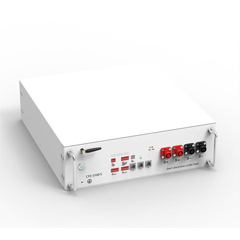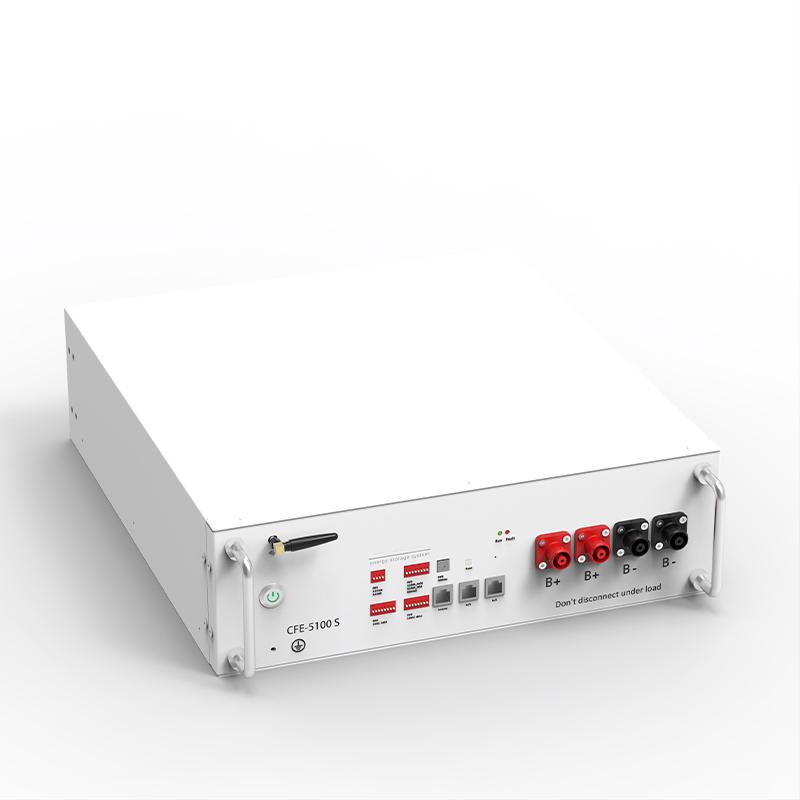The New Trend in Home Energy Storage: Why Stackable Lithium-ion Batteries Are the Best Choice
Feb 10, 2025
As the world transitions to a new energy structure, the home energy storage market is growing rapidly. With the increasing adoption of solar photovoltaic (PV) systems and the rising cost pressures from fluctuating electricity prices, more households are turning to energy storage batteries to enhance energy independence, optimize electricity costs, and ensure critical devices continue running during power outages. Among various energy storage solutions, stackable lithium-ion batteries stand out as the best choice due to their high energy density, modular design, and easy installation.
The Market Trend of Solar Energy + Energy Storage
In recent years, the global installed capacity of solar power has been steadily increasing. Home solar PV systems have become a key driver of renewable energy adoption in many countries. However, solar power generation is highly dependent on weather conditions and the day-night cycle, making it unreliable for 24/7 energy supply. This is where energy storage batteries play a crucial role—they store excess solar power during the day and release it at night or during peak demand hours. This improves energy utilization while reducing dependence on the power grid.
In this trend, the 48V Stackable Lithium-ion Energy Storage Battery has become an ideal choice for many homeowners. This battery seamlessly integrates with solar PV systems, allowing users to maximize the use of green energy, lower electricity costs, and improve power supply stability.
Advantages and Applications of Stackable Lithium-ion Batteries
Compared to traditional energy storage solutions, stackable lithium-ion batteries offer unique advantages, making them widely applicable in residential, commercial, and industrial settings.
1. High Energy Density for Enhanced Household Efficiency
Compared to lead-acid batteries, stackable lithium-ion batteries have a much higher energy density. For example, the 51.2V Stackable LiFePO4 Battery uses lithium iron phosphate (LiFePO4) cells, providing a longer cycle life and more stable discharge performance, ensuring reliable power when needed.
2. Flexible Modular Design for Easy Expansion
Household electricity needs may change over time due to new appliances, expanded solar systems, etc. Stackable lithium-ion batteries feature a modular design, allowing users to add or remove battery modules as needed without replacing the entire system. This flexibility makes home energy storage systems more adaptable and reduces initial investment costs.
3. Strong Compatibility for Seamless Inverter Integration
Modern home energy storage systems typically require inverters to ensure stable power output. Products from leading Stackable Lithium-ion Energy Storage Battery Manufacturers support multiple inverter protocols and are compatible with most mainstream inverter brands. This means users can easily upgrade their energy storage system without replacing their entire energy management setup.
4. High Safety and Reliability
Stackable lithium-ion batteries feature advanced Battery Management Systems (BMS) that prevent overcharging, over-discharging, and short circuits. Additionally, lithium iron phosphate (LiFePO4) batteries offer excellent thermal stability, reducing the risk of thermal runaway and ensuring safe operation.
5. Suitable for Various Applications
Home energy storage: Works with solar PV systems to reduce electricity bills and improve energy independence.
Commercial energy storage: Peak shaving and load shifting to optimize energy costs.
Industrial backup power: Provides stable power supply to prevent disruptions.
How to Choose the Right Stackable Lithium-ion Energy Storage Battery
1. Battery capacity: Choose the right capacity based on your household’s daily power consumption.
2. Battery voltage: Options like 48V Stackable Lithium-ion Energy Storage Battery and 51.2V Stackable LiFePO4 Battery suit different inverter systems.
3. Compatibility: Ensure the battery is compatible with your existing inverter to avoid extra costs.
4. Expandability: Opt for a modular stackable battery for easy future expansion.
Technological Developments and Future Trends in Stackable Energy Storage
Solid-state battery technology: Future energy storage solutions may use solid-state electrolytes for improved safety and energy density.
Smart BMS systems: AI-integrated battery management systems will optimize charging and discharging strategies to extend battery life.
Broader applications: Stackable storage solutions will expand from residential use to grid-scale energy storage, increasing renewable energy penetration.
How Stackable Energy Storage Batteries Help Industrial and Commercial Users Optimize Energy Management
Lower electricity costs: Store energy during low-rate periods and use it during peak hours.
Improve energy utilization: Combine with solar systems for self-consumption, reducing reliance on the grid.
Enhance power stability: Act as a backup power source to ensure critical equipment remains operational during outages.
How to Extend the Lifespan of Stackable Lithium-ion Batteries
Avoid overcharging and over-discharging: Keep discharge depth within 80% for longer lifespan.
Maintain proper temperature: Avoid extreme heat or cold conditions.
Regularly check BMS status: Ensure the battery management system is functioning properly to prevent imbalances.
Use smart charging strategies: Optimize charging and discharging cycles with intelligent inverters.
As the home energy storage market continues to evolve, stackable lithium-ion batteries are emerging as the ideal solution for both residential and commercial users. Their high energy density, modular design, long lifespan, and easy installation make them a preferred choice for reducing electricity costs, increasing energy independence, and ensuring backup power security.
Enecell is a leading energy storage battery manufacturer and lithium battery supplier in China, specializing in providing reliable and efficient energy storage solutions for residential and commercial users. Enecell’s storage battery products feature long lifespan and high safety standards, offering robust support for renewable energy systems and backup power applications. By optimizing energy usage efficiency, Enecell helps users achieve their sustainability goals.



